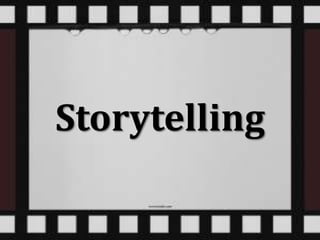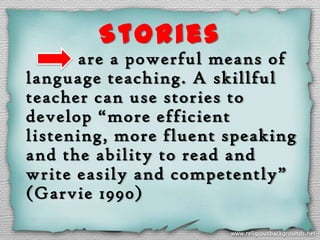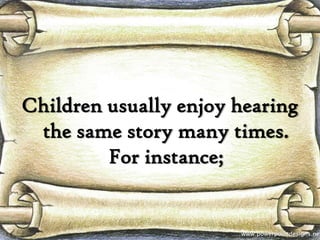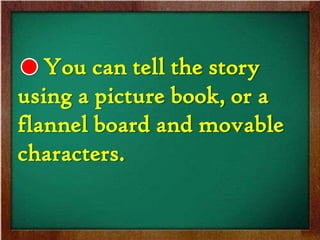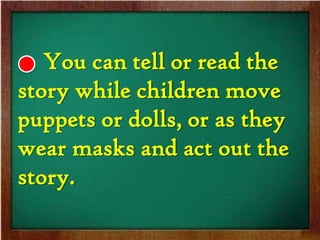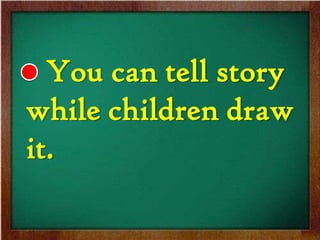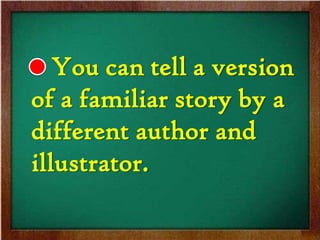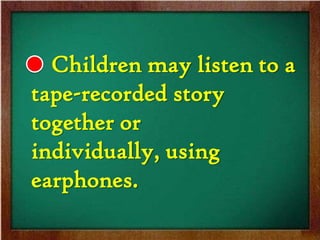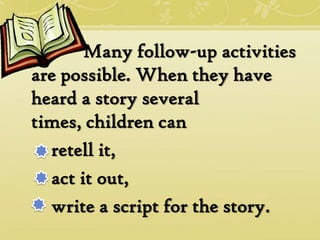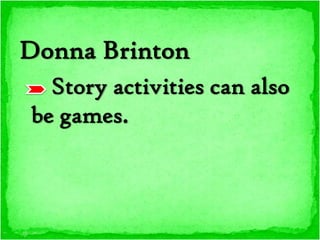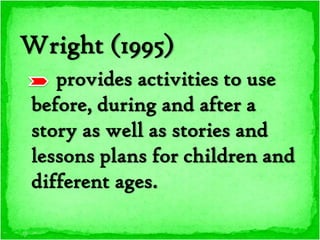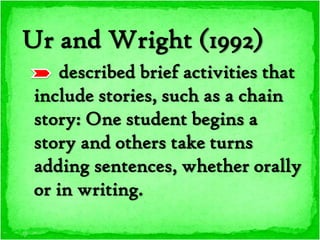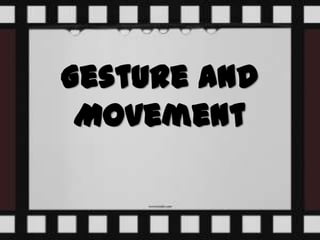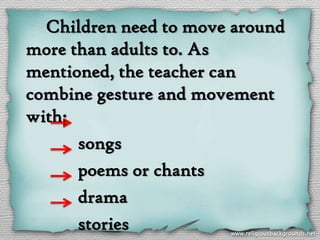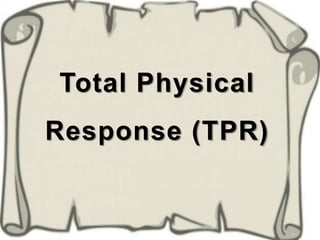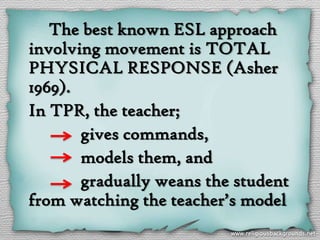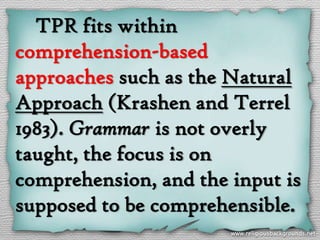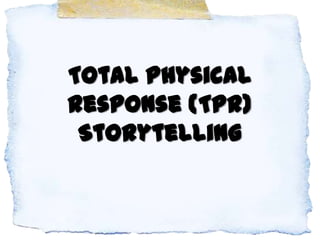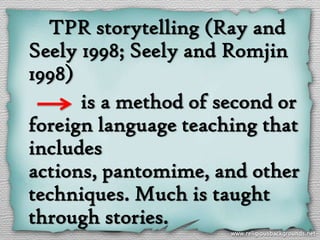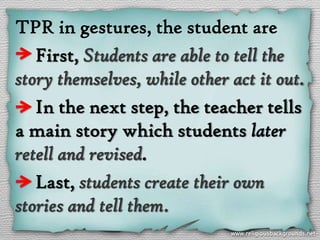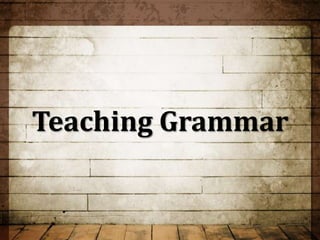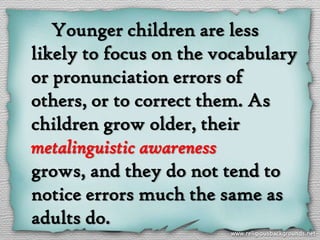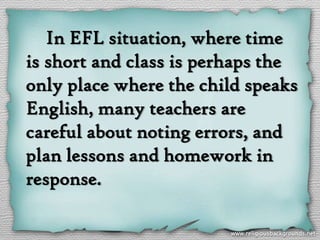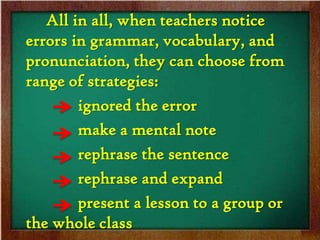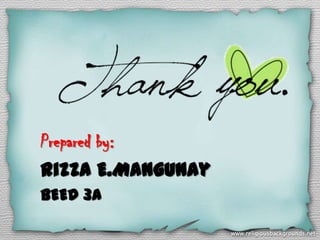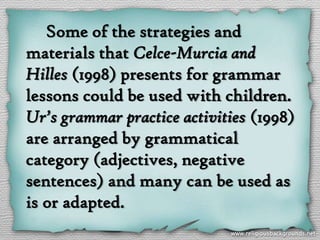Storytelling ppt
- 1. Storytelling
- 2. Stories are a powerful means of language teaching. A skillful teacher can use stories to develop “more efficient listening, more fluent speaking and the ability to read and write easily and competently” (Garvie 1990)
- 3. Children usually enjoy hearing the same story many times. For instance;
- 4. You can tell the story using a picture book, or a flannel board and movable characters.
- 5. You can tell or read the story while children move puppets or dolls, or as they wear masks and act out the story.
- 6. You can tell story while children draw it.
- 7. You can tell a version of a familiar story by a different author and illustrator.
- 8. Children may listen to a tape-recorded story together or individually, using earphones.
- 9. Many follow-up activities are possible. When they have heard a story several times, children can retell it, act it out, write a script for the story.
- 10. Donna Brinton Story activities can also be games.
- 11. Wright (1995) provides activities to use before, during and after a story as well as stories and lessons plans for children and different ages.
- 12. Ur and Wright (1992) described brief activities that include stories, such as a chain story: One student begins a story and others take turns adding sentences, whether orally or in writing.
- 14. Children need to move around more than adults to. As mentioned, the teacher can combine gesture and movement with; songs poems or chants drama stories
- 16. The best known ESL approach involving movement is TOTAL PHYSICAL RESPONSE (Asher 1969). In TPR, the teacher; gives commands, models them, and gradually weans the student from watching the teacher’s model
- 17. TPR fits within comprehension-based approaches such as the Natural Approach (Krashen and Terrel 1983). Grammar is not overly taught, the focus is on comprehension, and the input is supposed to be comprehensible.
- 18. Total Physical Response (TPR) Storytelling
- 19. TPR storytelling (Ray and Seely 1998; Seely and Romjin 1998) is a method of second or foreign language teaching that includes actions, pantomime, and other techniques. Much is taught through stories.
- 20. TPR in gestures, the student are First, Students are able to tell the story themselves, while other act it out. In the next step, the teacher tells a main story which students later retell and revised. Last, students create their own stories and tell them.
- 21. Tests focus on vocabulary. In the second or third year, grammar is taught by telling the stories from another point of view, thus requiring the learner to change tenses, pronounces and so on.
- 22. Teaching Grammar
- 23. Younger children are less likely to focus on the vocabulary or pronunciation errors of others, or to correct them. As children grow older, their metalinguistic awareness grows, and they do not tend to notice errors much the same as adults do.
- 24. In EFL situation, where time is short and class is perhaps the only place where the child speaks English, many teachers are careful about noting errors, and plan lessons and homework in response.
- 25. All in all, when teachers notice errors in grammar, vocabulary, and pronunciation, they can choose from range of strategies: ignored the error make a mental note rephrase the sentence rephrase and expand present a lesson to a group or the whole class
- 27. Some of the strategies and materials that Celce-Murcia and Hilles (1998) presents for grammar lessons could be used with children. Ur’s grammar practice activities (1998) are arranged by grammatical category (adjectives, negative sentences) and many can be used as is or adapted.

